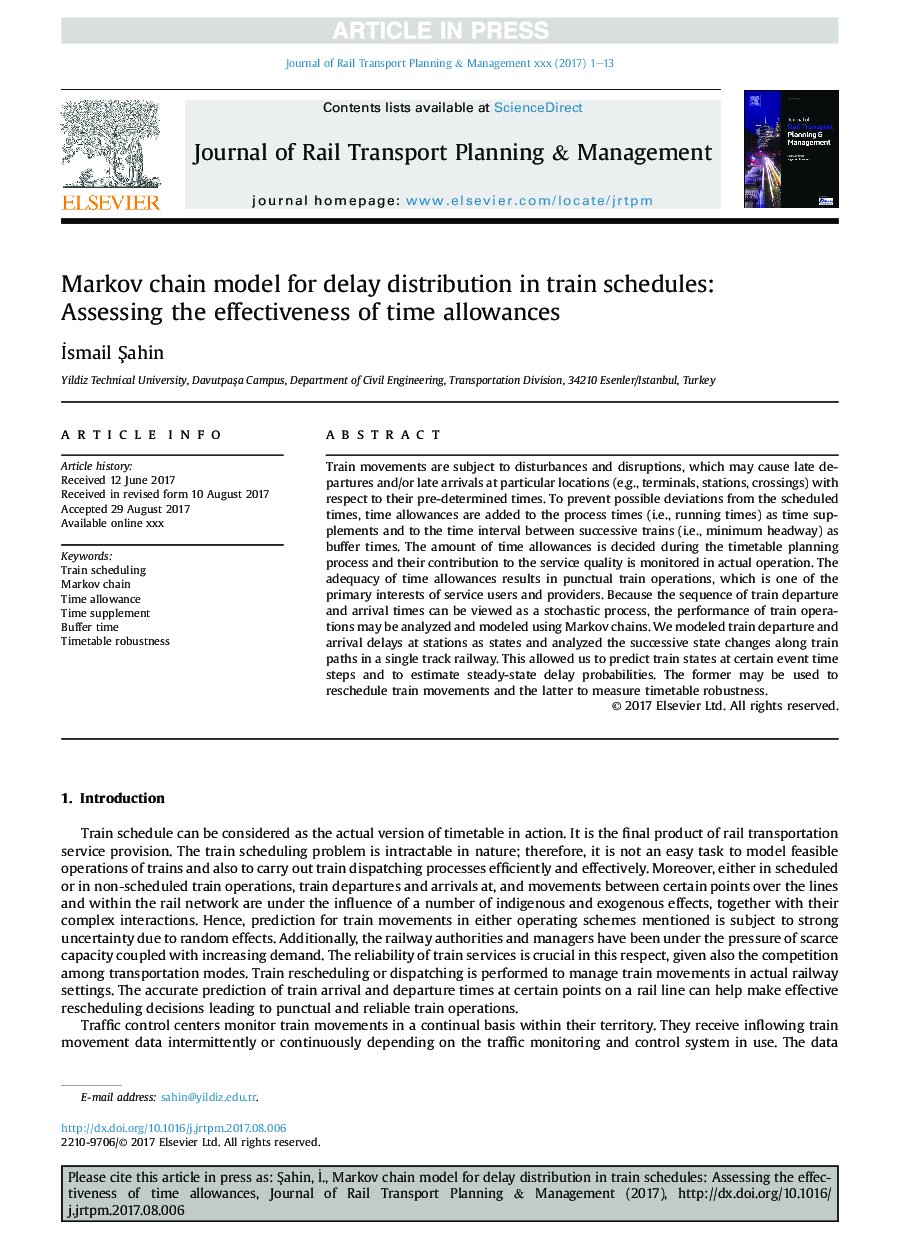| Article ID | Journal | Published Year | Pages | File Type |
|---|---|---|---|---|
| 6751998 | Journal of Rail Transport Planning & Management | 2017 | 13 Pages |
Abstract
Train movements are subject to disturbances and disruptions, which may cause late departures and/or late arrivals at particular locations (e.g., terminals, stations, crossings) with respect to their pre-determined times. To prevent possible deviations from the scheduled times, time allowances are added to the process times (i.e., running times) as time supplements and to the time interval between successive trains (i.e., minimum headway) as buffer times. The amount of time allowances is decided during the timetable planning process and their contribution to the service quality is monitored in actual operation. The adequacy of time allowances results in punctual train operations, which is one of the primary interests of service users and providers. Because the sequence of train departure and arrival times can be viewed as a stochastic process, the performance of train operations may be analyzed and modeled using Markov chains. We modeled train departure and arrival delays at stations as states and analyzed the successive state changes along train paths in a single track railway. This allowed us to predict train states at certain event time steps and to estimate steady-state delay probabilities. The former may be used to reschedule train movements and the latter to measure timetable robustness.
Keywords
Related Topics
Physical Sciences and Engineering
Computer Science
Computer Science Applications
Authors
Ä°smail Åahin,
